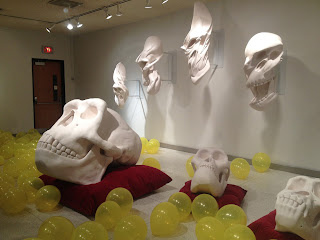.JPG)
Hi! My name is Sun-Mo Koo
I am from Burbank, CA and I am planning to be an Art major with an Econ minor at Allegheny College. My future goal in life is to go to Carnegie Mellon for grad school and possibly get an internship at Dreamworks :). I chose to be in Professor Geffen's Ceramics 1 class this semester because I enjoyed the previous class I had with her. I also want to learn and improve my art-making process. I enjoy making and molding things out of clay. Clay has been a passion of mine since I was in middle school. I LOVED working with polymer clay because of the different colors they came in. I was fascinated with the idea of molding something to your desire and hardening it in the oven and it will stay that shape forever.


Both works on the left (Man-made Sanctuary (Green)) and right (Building Parameters XVI) are works from Aaron Tennessee Benson. He is a new artist who was acknowledged in 2011. From both works, I was intrigued by the way it was structured. And the shapes Benson used is very geometric and involves a lot of negative space. Although the project we are working on only involves enclosed forms, these works are relatable by assembling different shapes and forms together to create a balanced structure.

































.JPG)

